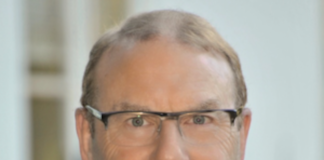
HIV activists have been saying for years that investing in local communities could improve HIV outcomes for Black and Latino people for whom the current health care system isn’t working. New data from the Conference on Retroviruses and Opportunistic Infections (CROI) seem to support this.
Kashif Iqbal, MPH, of the Centers for Disease Control and Prevention (CDC), presented data from seven metropolitan statistical areas that received funding for the CDC’s THRIVE program, a five-year demonstration project that formed community collaboratives and provided funding for pre-exposure prophylaxis (PrEP) to community groups working with Black and Latino gay and bisexual men. These were communities without ready access to PrEP otherwise. They were Philadelphia; Baltimore; Washington, DC; Virginia Beach-Norfolk; Newport News, Virginia; New Orleans; New York City; and Birmingham, Alabama.
The funding paid for increased HIV testing, PrEP screening, counseling, education and navigation services, support for continuing to take PrEP if appropriate, and trainings for local health care providers on how to provide PrEP to clients. Plus, the collaborative of community-based groups, health departments and health care providers met regularly to assess needs and adjust.
Researchers then used National HIV Surveillance System data to compare HIV diagnosis rates between those seven jurisdictions receiving THRIVE funding and 12 others with similar demographics that didn’t receive this funding. The THRIVE-eligible but non-funded jurisdictions included Columbia, South Carolina; Atlanta; Orlando, Florida; Dallas; San Antonio; Phoenix; Miami; Puerto Rico; and Newark.
They found that 9,494 Black and 3,528 Latino gay and bi men received PrEP services in the THRIVE jurisdictions. Between 2014 and 2018, HIV diagnoses among Black same-gender-loving men were 4.2% lower in THRIVE jurisdictions than in THRIVE-eligible but unfunded jurisdictions.
Meanwhile, HIV diagnoses rose 1.7% among Latino gay and bi men in THRIVE-eligible but unfunded jurisdictions. But in areas where community groups and health departments worked together to get PrEP to Latino men, HIV diagnoses dropped by 2.7%.
Especially significant was the finding that Black men between ages 25 and 34 saw their HIV rates increase over those four years in jurisdictions not funded through THRIVE. But in THRIVE-funded jurisdictions, the rates decreased. There was a similar, statistically significant difference between HIV diagnoses among 35- to 44-year-old Latino gay and bi men.
But Iqbal cautioned that the results couldn’t necessarily be attributed to the community collaboration, noting that a lot of factors affect overall HIV diagnosis rates in a community. Notably, during this same time, New York City reached the UNAIDS 90-90-90 goals separate from the THRIVE funding. Still, he said, the program seems to have had some effect.
“One of the lessons learned in THRIVE was that health department–led collaborations with community-based organizations and clinical partners can improve the provision of HIV prevention services,” he said. “However, barriers still exist and highlight the need to better engage with the Hispanic community and the African-American community to identify better ways to engage these populations.”
Click here to read the CROI abstract.








